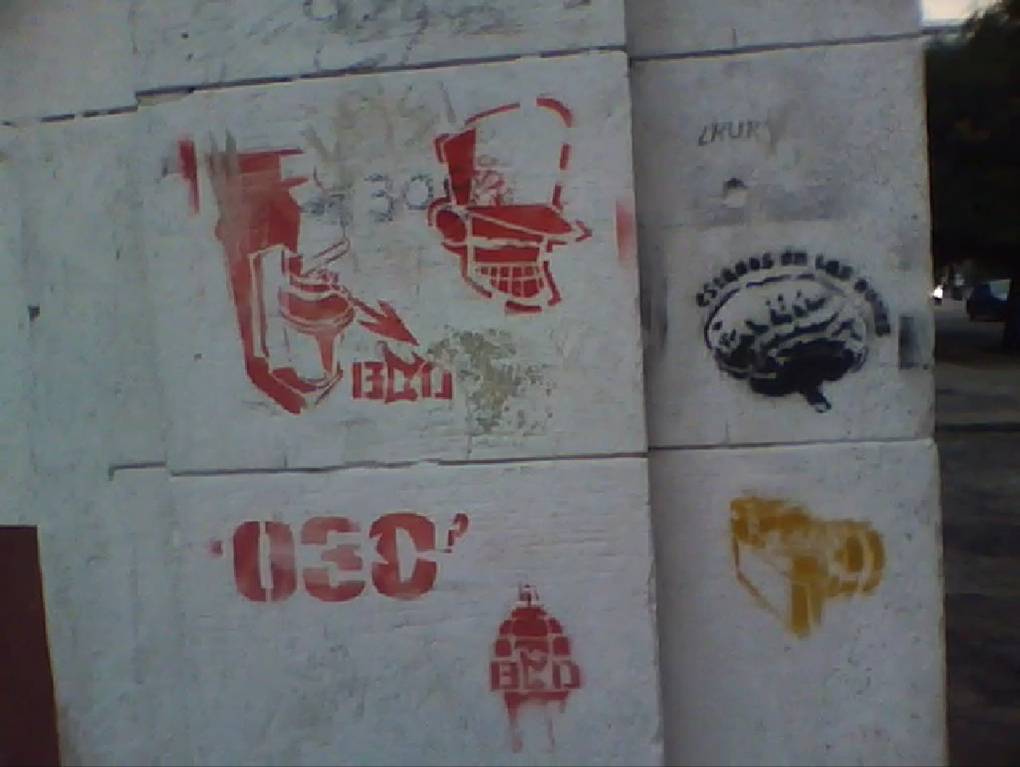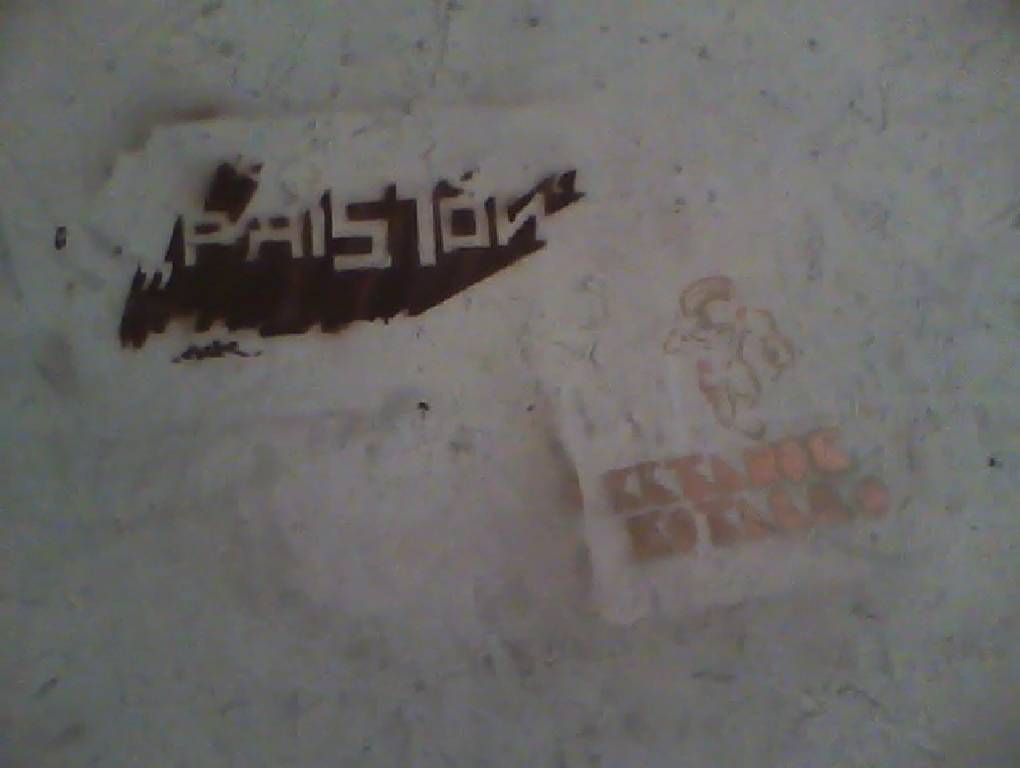A Little on Cuban Graffiti
Daisy Valera

People who are interested in graffiti here on the island generally agree that the appearance of this Cuban street art dates back to around ten years ago.
This is associated with the fact that in the Biennial Art Festival that year, several foreign graffitists participated, exhibiting their abilities.
Although the graffiti movement has had its greatest force and impact in Havana, graffiti has recently begun to expand across the whole country, even attracting attention in the press.
An example of this coverage was a short TV news feature that was aired this past summer vacation and in which mention was made of the presence of graffiti in Holguin (a city in eastern Cuba). This art form has been accepted there by certain cultural institutions though others have determined it to be “inappropriate.”
This determination by those official bodies was presented in this way: Only the graffiti created after having received the approval of a State institution are valid and can be considered art, while the remaining ones lack cultural value and act only to deface public property.
As for me, I could only beg to differ; the unapproved Cuban graffiti is of a much greater importance.

We can mention as examples those that are little more than signatures, like “El Sexto” (the sixth) and “Bulldog,” and others that go a good bit further in terms of complexity by using stencils and stickers.
Within stenciled graffiti there stand out the numerous ones that, along with military helmets and grenades, exhibit the initials “BCD,” which stands for “Bajo condiciones dificiles” (Under difficult conditions). Most people believe is a reference to poor living conditions here on the island.
Others of this type exhibit the words “LOVE” or “PRI51ON” (Spanish for “prison,” but in place of the letters “S” and “I,” they use the numbers 5 and 1). In this case, some believe this to be an allusion to the 51 years that have passed since the Revolution).
A less frequent graffiti image is one that depicts a desk followed by an equal sign and then a car. Near this is another image with a pick-ax followed by an unequal sign and then the initials CUC (standing for the Cuban convertible peso, or hard currency). This composition is thought to refer to the existence of a privileged bureaucratic class alongside a working class that finds it impossible to receive a wage that allows it to live.
After viewing these, one realizes that Cubans graffiti vandals aren’t creating these works only to feel the rush of adrenaline or to escape from the police, who in many cases confiscate their expensive work materials.
The existence of graffiti demonstrates the need for expression on the part of youth as a whole and it is definitively associated with the origins of the world “graffiti” – a form of confrontation with the existing social-political order.

Comments are closed.